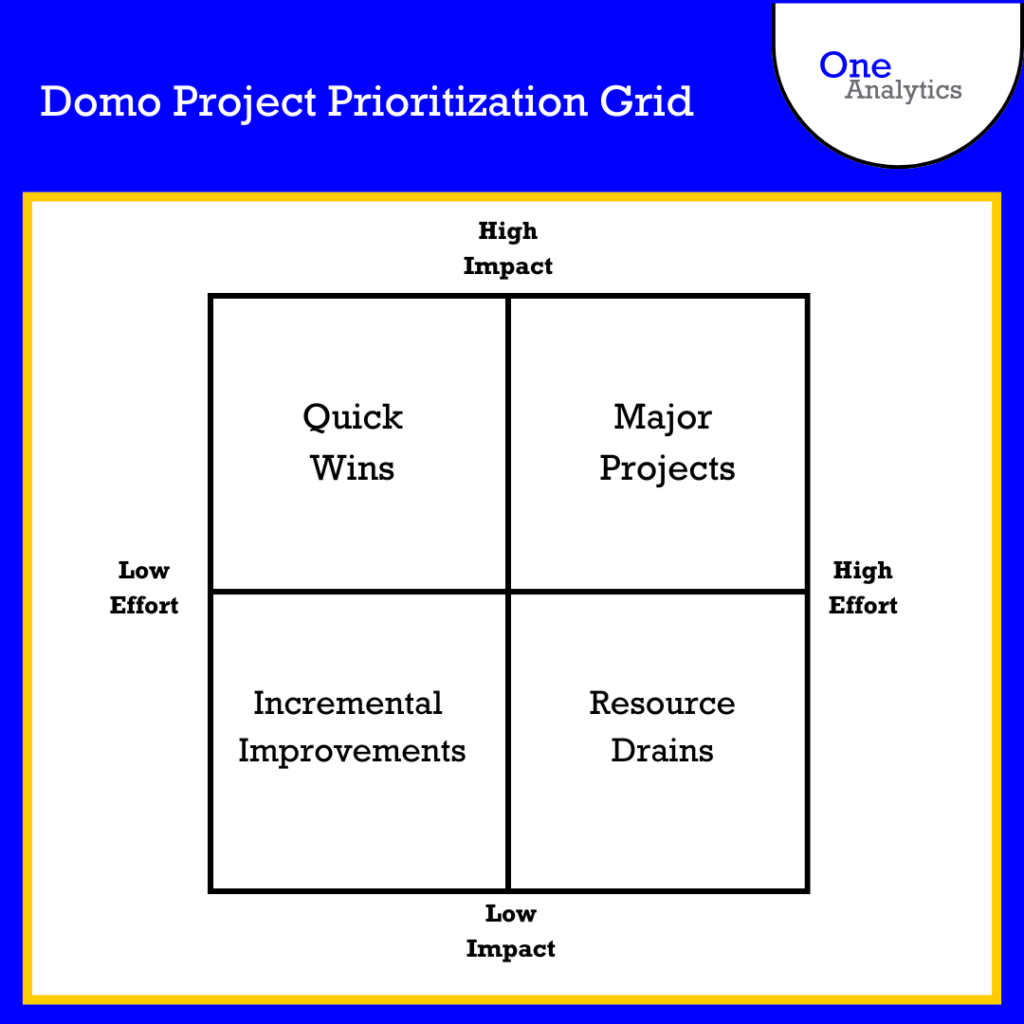If your organization is just beginning its journey with Domo, it can be hard to know where to begin. Domo is loaded with features that enable infinite possibilities for your data, but which of those possibilities should you pursue first? What do you need to do to ensure that Domo adoption within your organization is a smooth process?
Here are our top three tips for a successful Domo implementation.
1. Get stakeholders involved early
Prior to beginning work within Domo, we recommend meeting with all of the stakeholders that will be utilizing Domo. In these meetings, you should ensure that you understand each stakeholder’s needs and wants. Having these conversations early will allow you to identify the projects that matter most to your organization. Additionally, aligning with those who will leverage your efforts helps you avoid having to undo or redo work.
Conducting a listening tour to solicit input can be a great approach. We recommend meeting with all departments in your organization and using the following questions as a launching point for discussion:
- What data do you use to make decisions?
- What data do you report on weekly, monthly, quarterly, or annually?
- Where does that data reside? For example, is it stored in your CRM, in advertising platforms like Facebook or Google Ads, etc.?
- How are you currently visualizing that data? For example, do you have an Excel spreadsheet or a Google sheet where you have tables or graphs?
- What data are you missing that would allow you to make better decisions if you had it?
Ask follow up questions to dive deeper and gain an understanding of what potential projects could be tackled for each department. Take detailed notes on each department’s responses – those notes will be invaluable later on.
2. Identify and prioritize your Domo projects
Following a listening tour, we recommend creating a list to identify all the potential projects you’d like to complete as part of your Domo implementation.
As you list out potential projects, it is helpful to look at how other companies are using Domo to give yourself additional ideas. You can check out fellow Domo users’ stories on Domo’s website. Additionally, you can check out how we at One Analytics are using Domo to track time and automate our PTO approval process.
Your resulting list of projects might be quite long. This is a great sign that you can add a lot of value with Domo! We recommend prioritizing the list based on the amount of effort required to complete each project and the amount of impact the project will have.
We use the following grid to group projects into categories.

Once you group projects into categories, it can be helpful to check back in with stakeholders to see if everyone agrees on how a project has been classified. For example, if you’ve categorized a project as a “Resource Drain” (High Effort with Low Impact) but the department sees it as a “Major Project” (High Effort with High Impact), it is helpful to have a conversation to ensure that both sides get a chance to articulate their views on the project and reach a consensus on how it should be categorized.
After everyone is aligned on how projects should be categorized, we recommend prioritizing as follows:
- Quick Wins (Low Effort with High Impact) – Generate momentum and excitement by showing the value of Domo quickly.
- Major Projects (High Effort with High Impact) – Tackle more significant challenges and continue to show value.
- Incremental Improvements (Low Effort with Low Impact) – Make the tweaks that make things a little bit better.
- Resource Drains (High Effort with Low Impact) – Eliminate these projects from your list and avoid investing significant time for limited impact.
3. Map and define your data
For each project, create a document that outlines the following:
- What data (i.e. dimensions and metrics) is needed to complete the project?
- Where does that data reside?
- Are there any nuances and calculations that the person building out the Domo dataset and dashboard should know?
Clearly defining these items helps to avoid confusion and the need for one-off questions. It streamlines the building process and allows you to see value sooner.
Looking for additional support?
If you need additional support with your Domo implementation, we can help. Check out our Domo consulting services today!


